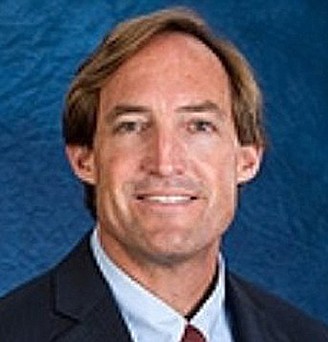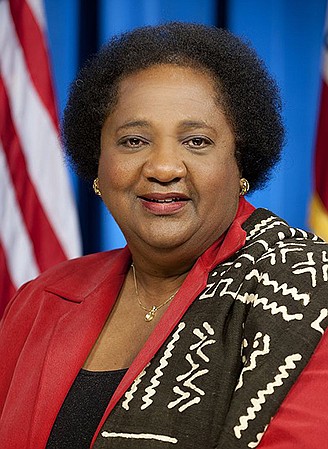 Facebook
Facebook
 X
X
 Instagram
Instagram
 TikTok
TikTok
 Youtube
Youtube

The ungraceful demise of La Jolla’s semi-famous Lorax Tree may be only the beginning. San Diego’s urban forest has grown increasingly unruly, and much of the blame lies with not knowing what’s going on among the branches at the top of the city’s organization tree, says a new audit. “According to the most recent estimate of the street tree inventory, there are over 200,000 street trees in the public right-of-way,” per a May 31 report by interim city auditor Kyle Elser. “Just over 20 percent of the street trees are some type of palm tree, and the other 80 percent are considered shade trees.”

Vested with the responsibility of taking care of most of that greenery is the Urban Forestry team of the city’s Street Division, with an annual goal of trimming 44,000 trees by way of a $2.4 million outsourcing contract. But the city “does not have sufficient contract administration to provide assurance that the vendor responsible for tree maintenance is meeting contractual obligations.” In addition, “invoice documentation provided by the Contractor for palm trees does not provide sufficient documentation of work performed to determine whether tree maintenance was billed at the correct rate.”
On top of that, a “proposed $1.1 million reduction to non-palm tree trimming in Fiscal Year 2020 will effectively eliminate all scheduled non-palm tree trimming and reduce the total number of trees trimmed to 25,000.” Per the audit, a contractor currently “trims or removes just over 80 percent of the Street Division’s targeted number of trees trimmed. This breaks down to approximately 21,500 palm trees and about 14,200 shade trees trimmed or removed — 35,700 total — by the Contractor each year.” Adds the report, “The last renewable year of the contract was [Fiscal Year] 2019 and the Street Division is currently in the process of preparing for a new bid.” Warn auditors, “deferred tree maintenance may lead to a decline in the health of City trees. Unhealthy trees could result in the loss of expensive and beneficial tree assets, impede the City’s ability to meet certain Climate Action Plan goals, and increase public safety risks.”

The San Diego Unified School District has been restraining and secluding its recalcitrant students at a relatively high rate, according to data in a June 18 report by the U.S. Government Accountability Office entitled Accuracy of Restraint and Seclusion Data. But comparisons to school districts reporting no use of controversial disciplinary and management methods may not be all that fair, auditors say.
Every two years, the Department of Education “collects and publicly reports data from nearly all public school districts and schools as part of its Civil Rights Data Collection,” the GAO says. “Districts self-report and certify the data.” And there’s the rub, per the report. For the school year ending June 2016, “70 percent of the more than 17,000 school districts in the U.S. reported zero incidents of restraint and zero incidents of seclusion. In 39 states and the District of Columbia, more than half of the school districts reported zero incidents; and in 12 states, 80 percent or more of the districts reported zero incidents.”
But many districts “do not accurately capture all incidents of restraint and seclusion,” auditors found, leaving a confusing patchwork of reporting. For instance, “New York City’s data on mechanical restraint were missing,” according to the report. New York, the nation’s biggest school district with 984,500 students, “reported zero incidents of physical restraint.” On the other hand, Los Angeles Unified, the second largest district in the country, with 539,634 students, posted 184 incidents of restraint and no seclusions. The 30th largest district in Jefferson County, Kentucky checked in with the largest tally, 1239 instances of restraint and 118 seclusions. San Diego Unified, the nation’s 20th largest district with a pupil headcount of 130,964, reported it had administered 203 cases of restraint and 46 instances of seclusion, according to the audit.
“In broad terms,” the report says, restraint is defined as “restricting a student’s ability to freely move his or her torso, arms, legs, or head. Seclusion is “involuntarily confining a student alone in a room or area from which the student is physically prevented from leaving.” A bill authored by Assembly Democrat Shirley Weber of San Diego and signed into state law by Governor Jerry Brown in December now bans most restraint and seclusion in California schools. It continues to permit so-called prone restraints, in which offending students are pinned down with face to the floor, their arms pulled behind them. The practice is sometimes used to manage students with autism and other special needs, the Sacramento Bee reported in January. “We want to provide a certain amount of latitude for very specific, extreme circumstances, but ban it under (most) circumstances,” Weber’s communications director Joe Kocurek told the paper.


The ungraceful demise of La Jolla’s semi-famous Lorax Tree may be only the beginning. San Diego’s urban forest has grown increasingly unruly, and much of the blame lies with not knowing what’s going on among the branches at the top of the city’s organization tree, says a new audit. “According to the most recent estimate of the street tree inventory, there are over 200,000 street trees in the public right-of-way,” per a May 31 report by interim city auditor Kyle Elser. “Just over 20 percent of the street trees are some type of palm tree, and the other 80 percent are considered shade trees.”

Vested with the responsibility of taking care of most of that greenery is the Urban Forestry team of the city’s Street Division, with an annual goal of trimming 44,000 trees by way of a $2.4 million outsourcing contract. But the city “does not have sufficient contract administration to provide assurance that the vendor responsible for tree maintenance is meeting contractual obligations.” In addition, “invoice documentation provided by the Contractor for palm trees does not provide sufficient documentation of work performed to determine whether tree maintenance was billed at the correct rate.”
On top of that, a “proposed $1.1 million reduction to non-palm tree trimming in Fiscal Year 2020 will effectively eliminate all scheduled non-palm tree trimming and reduce the total number of trees trimmed to 25,000.” Per the audit, a contractor currently “trims or removes just over 80 percent of the Street Division’s targeted number of trees trimmed. This breaks down to approximately 21,500 palm trees and about 14,200 shade trees trimmed or removed — 35,700 total — by the Contractor each year.” Adds the report, “The last renewable year of the contract was [Fiscal Year] 2019 and the Street Division is currently in the process of preparing for a new bid.” Warn auditors, “deferred tree maintenance may lead to a decline in the health of City trees. Unhealthy trees could result in the loss of expensive and beneficial tree assets, impede the City’s ability to meet certain Climate Action Plan goals, and increase public safety risks.”

The San Diego Unified School District has been restraining and secluding its recalcitrant students at a relatively high rate, according to data in a June 18 report by the U.S. Government Accountability Office entitled Accuracy of Restraint and Seclusion Data. But comparisons to school districts reporting no use of controversial disciplinary and management methods may not be all that fair, auditors say.
Every two years, the Department of Education “collects and publicly reports data from nearly all public school districts and schools as part of its Civil Rights Data Collection,” the GAO says. “Districts self-report and certify the data.” And there’s the rub, per the report. For the school year ending June 2016, “70 percent of the more than 17,000 school districts in the U.S. reported zero incidents of restraint and zero incidents of seclusion. In 39 states and the District of Columbia, more than half of the school districts reported zero incidents; and in 12 states, 80 percent or more of the districts reported zero incidents.”
But many districts “do not accurately capture all incidents of restraint and seclusion,” auditors found, leaving a confusing patchwork of reporting. For instance, “New York City’s data on mechanical restraint were missing,” according to the report. New York, the nation’s biggest school district with 984,500 students, “reported zero incidents of physical restraint.” On the other hand, Los Angeles Unified, the second largest district in the country, with 539,634 students, posted 184 incidents of restraint and no seclusions. The 30th largest district in Jefferson County, Kentucky checked in with the largest tally, 1239 instances of restraint and 118 seclusions. San Diego Unified, the nation’s 20th largest district with a pupil headcount of 130,964, reported it had administered 203 cases of restraint and 46 instances of seclusion, according to the audit.
“In broad terms,” the report says, restraint is defined as “restricting a student’s ability to freely move his or her torso, arms, legs, or head. Seclusion is “involuntarily confining a student alone in a room or area from which the student is physically prevented from leaving.” A bill authored by Assembly Democrat Shirley Weber of San Diego and signed into state law by Governor Jerry Brown in December now bans most restraint and seclusion in California schools. It continues to permit so-called prone restraints, in which offending students are pinned down with face to the floor, their arms pulled behind them. The practice is sometimes used to manage students with autism and other special needs, the Sacramento Bee reported in January. “We want to provide a certain amount of latitude for very specific, extreme circumstances, but ban it under (most) circumstances,” Weber’s communications director Joe Kocurek told the paper.
Comments